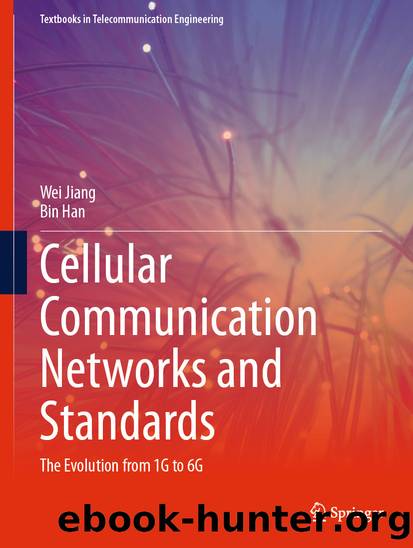Cellular Communication Networks and Standards by Wei Jiang & Bin Han

Author:Wei Jiang & Bin Han
Language: eng
Format: epub
ISBN: 9783031578205
Publisher: Springer Nature Switzerland
7.3.10 Heterogeneous Network/HetNet
The network architecture has been transformed due to the increasing need to deliver high data rates to a large number of mobile users. In cellular networks, to achieve high system capacity, various techniques are employed. These include employing advanced radio transmission methods to enhance spectral efficiency, acquiring more spectral resources, or deploying denser network nodes. In a traditional homogeneous network, cell splitting is used to decrease cell size and increase capacity, but this requires network re-planning and system reconfiguration. Additionally, the traffic demand is not evenly distributed. To address these challenges, LTE-Advanced introduced Heterogeneous Networks (HetNets), which consist of cells of different sizes, transmit powers, coverage areas, and hardware capabilities, such as macro, micro, pico, and femtocells. Low-power, cost-effective base stations are added to macro-cell networks as underlying nodes to provide high capacity in areas with high demand or to fill coverage gaps, both indoors and outdoors.
Ideally, if there are sufficient radio resources available, different frequency bands can be allocated to different cell types to avoid interference. However, due to the increased traffic demand, it is not always possible to allocate a dedicated carrier for small cells. As a result, heterogeneous cells must coexist and operate on the same set of frequencies, even if they overlap geographically. One of the major challenges in deploying a heterogeneous network is managing inter-cell interference. To tackle this issue, 3GPP established a work item focused on ICIC, which was later evolved to eICIC. LTE-Advanced utilizes carrier aggregation to support the deployment of such a heterogeneous network. In this approach, cross-carrier scheduling is employed, allowing control signaling to be transmitted on a shared component carrier. This helps prevent interference on control channels between the macro-cell layer and the small-cell layer.
Download
This site does not store any files on its server. We only index and link to content provided by other sites. Please contact the content providers to delete copyright contents if any and email us, we'll remove relevant links or contents immediately.
Whiskies Galore by Ian Buxton(41716)
Introduction to Aircraft Design (Cambridge Aerospace Series) by John P. Fielding(33014)
Small Unmanned Fixed-wing Aircraft Design by Andrew J. Keane Andras Sobester James P. Scanlan & András Sóbester & James P. Scanlan(32683)
Aircraft Design of WWII: A Sketchbook by Lockheed Aircraft Corporation(32161)
Craft Beer for the Homebrewer by Michael Agnew(18079)
Turbulence by E. J. Noyes(7891)
The Complete Stick Figure Physics Tutorials by Allen Sarah(7261)
The Institute by Stephen King(6854)
Kaplan MCAT General Chemistry Review by Kaplan(6818)
The Thirst by Nesbo Jo(6752)
Bad Blood by John Carreyrou(6472)
Modelling of Convective Heat and Mass Transfer in Rotating Flows by Igor V. Shevchuk(6352)
Learning SQL by Alan Beaulieu(6158)
Weapons of Math Destruction by Cathy O'Neil(6080)
Man-made Catastrophes and Risk Information Concealment by Dmitry Chernov & Didier Sornette(5874)
Permanent Record by Edward Snowden(5677)
Digital Minimalism by Cal Newport;(5582)
Life 3.0: Being Human in the Age of Artificial Intelligence by Tegmark Max(5402)
iGen by Jean M. Twenge(5320)
